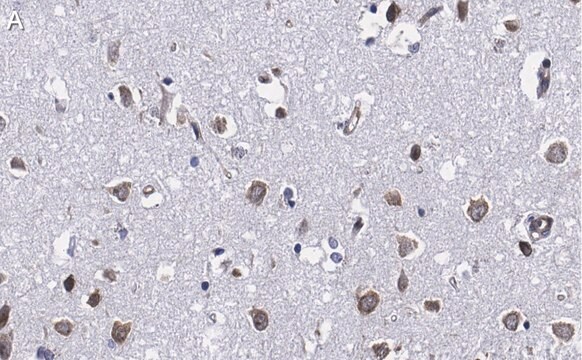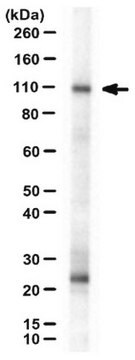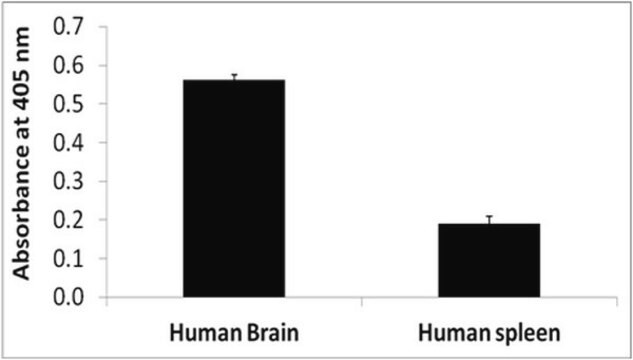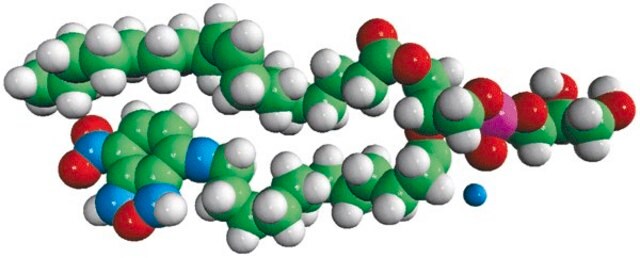ABS1509
Anti-phospho-Neph1 (Tyr637/638) Antibody
from rabbit, purified by affinity chromatography
Sinónimos:
Kin of IRRE-like protein 1, Kin of irregular chiasm-like protein 1, Nephrin-like protein 1, phospho-Neph1 (Tyr637/638)
About This Item
Productos recomendados
biological source
rabbit
Quality Level
antibody form
affinity isolated antibody
antibody product type
primary antibodies
clone
polyclonal
purified by
affinity chromatography
species reactivity
human
species reactivity (predicted by homology)
rat (based on 100% sequence homology), mouse (based on 100% sequence homology)
technique(s)
western blot: suitable
NCBI accession no.
UniProt accession no.
shipped in
wet ice
target post-translational modification
phosphorylation (pTyr637/pTyr638 )
Gene Information
human ... KIRREL1(55243)
General description
Specificity
Immunogen
Application
Signaling
Signaling Neuroscience
Western Blotting Analysis: A representative lot detected Neph1 phosphorylation in lysates from puromycin aminonucleoside-/PAN-treated human pocodytes (Arif, E., et al. (2014). J Biol Chem. 289(14):9502-9518).
Quality
Western Blotting Analysis: A 1:1,000 dilution of this antibody detected Neph1 phosphorylation at the target tyrosine residues in 7.5 µL of pervanadate treated human podocyte cell lysate.
Target description
Physical form
Storage and Stability
Handling Recommendations: Upon receipt and prior to removing the cap, centrifuge the vial and gently mix the solution. Aliquot into microcentrifuge tubes and store at -20°C. Avoid repeated freeze/thaw cycles, which may damage IgG and affect product performance.
Note: Variability in freezer temperatures below -20°C may cause glycerol containing solutions to become frozen during storage.
Other Notes
Disclaimer
¿No encuentra el producto adecuado?
Pruebe nuestro Herramienta de selección de productos.
Storage Class
10 - Combustible liquids
wgk_germany
WGK 3
Certificados de análisis (COA)
Busque Certificados de análisis (COA) introduciendo el número de lote del producto. Los números de lote se encuentran en la etiqueta del producto después de las palabras «Lot» o «Batch»
¿Ya tiene este producto?
Encuentre la documentación para los productos que ha comprado recientemente en la Biblioteca de documentos.
Nuestro equipo de científicos tiene experiencia en todas las áreas de investigación: Ciencias de la vida, Ciencia de los materiales, Síntesis química, Cromatografía, Analítica y muchas otras.
Póngase en contacto con el Servicio técnico








